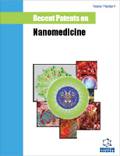Abstract
Numerous efforts in oncological scientific research have revealed many causative facets of leukemia, explaining mechanistic aspects of disease progression at the molecular scale. Reports record over 40,000 new cases of patients afflicted with myeloid and lymphocytic leukemia annually worldwide. Early diagnosis and quick therapy are advantageous in effective treatment. Conventional methods mainly rely on blood cell counts and bone marrow biopsies for detection but these are inefficient in accurately diagnosing leukemia. Contemporary research has employed core nanotechnology in designing more efficient diagnostic and theranostic systems for leukemia. In such systems, biological markers and genetic materials such as siRNA and peptides tagged with nanoparticles (dendrimers, aptamers, and metal nanoparticles) form the fundamental elements that work at the molecular level and confer a high degree of specificity for recognition and capture, and in a therapeutic context, cytotoxicity for eradication of cancerous cells. We review current research and patented technologies that focus on nanomaterials as promising tools in detection and treatment of chronic and acute leukemia.
Keywords: Diagnosis, leukemia, nanomedicine, theranosis, treatment.
 22
22

